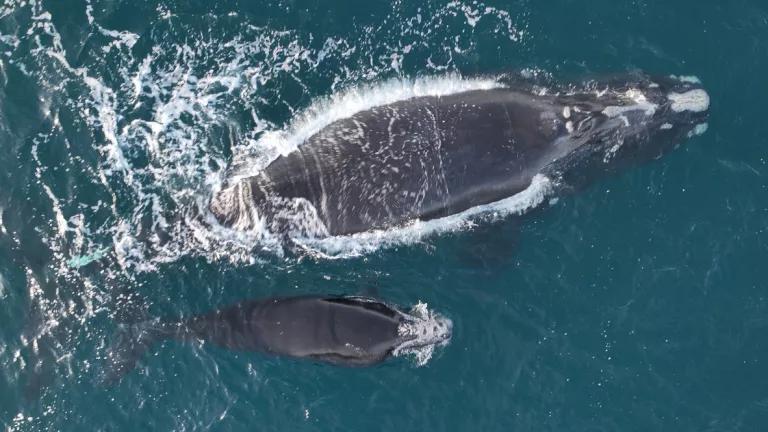These days wildlife work can be a bit depressing. Climate change and disappearing habitat have a lot of species on the ropes. But occasionally, we get good news. Here’s some on a species I have blogged about in the past: Ozark hellbenders.
Never heard of them? They are the badasses of the amphibian world: gigantic salamanders with a host of cool motorcycle gang names (devil dogs, Allegheny alligators, mud devils, snot otters. Ozark hellbenders grow to be a couple feet long living under rocks at the bottom of fast-moving rivers and streams in the Ozarks of Missouri and Arkansas. That sounds like a safe, sheltered place to live, but their homes and nesting grounds have been mucked up by mining operations and degradation of our waterways to the point that the U.S. Fish & Wildlife Service floated a potential Federal Endangered Species Listing in 2010. NRDC supported that and weighed in with even more science to push for the action -- and the species was soon listed.
And now, courtesy of Scientific American, there is more good news. Test-tube hellbender babies.
Sometimes, animals on the road to extinction need more than the lifeline offered by federal protections. In the case of hellbenders’ numbers are extremely low, so the news that help is on the way from St. Louis Zoo and Nashville Zoo is huge---as noted by SciAm:
Hellbenders are a difficult species to breed in captivity, and getting a hold on wild individuals to bring back to the lab is no walk in the park either. “Catching hellbenders is tough work because they live under large stones in rivers and streams,” says McGinnity.
“We have to get several big guys with log peaveys (a log-moving tool) to tilt the rocks up, so that one of us can snorkel underneath to see if hellbenders are present.” He’s hoping a recent collaboration with geneticist Michael Freake from Lee University in Tennessee will result in a new technique that can detect hellbender DNA in a water sample to quickly determine if there are hellbenders lurking in a particular stream.
It’s taken a team at St Louis Zoo in Missouri many years to be the first to successfully breed Ozark hellbenders in captivity, which they did last year by fertilisiling eggs with sperm collected from males kept in artificial stream systems. “The natural breeding at St Louis is great, and will produce many animals for release in the future, but the genetic variability of these offspring is limited,” says McGinnity.
Working instead with the eastern hellbender subspecies, McGinnity’s team at Nashville Zoo are developing new reproductive technologies to breed them in a laboratory setting, which, when perfected, will hopefully produce large numbers of genetically diverse offspring for reintroduction into the wild.
Doing everything we can to help the species is important, but if we don’t have healthy habitat for them to live in, it is all for naught. Its time to help the hellbender and get serious about putting a dent in the water pollution that impacts us all.




